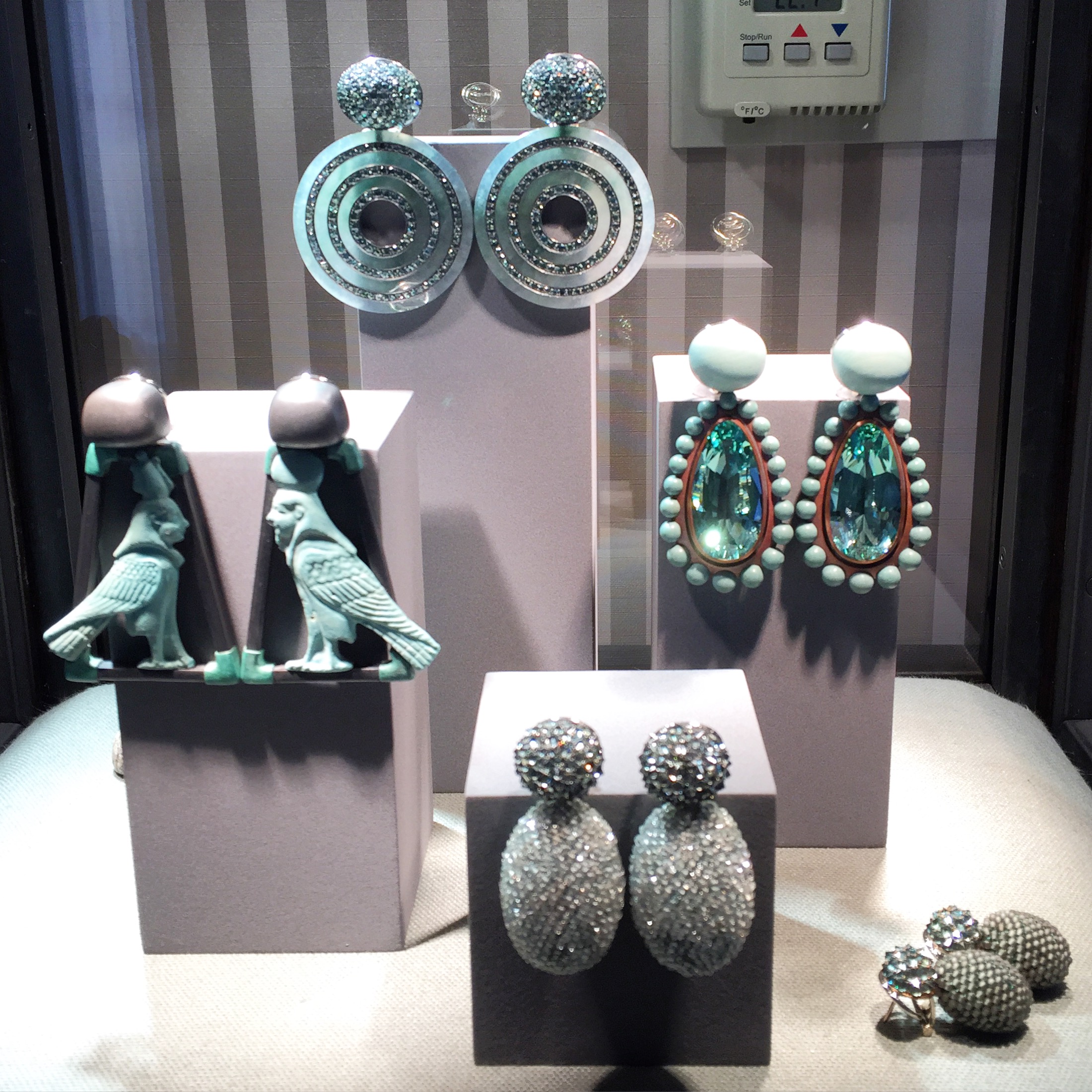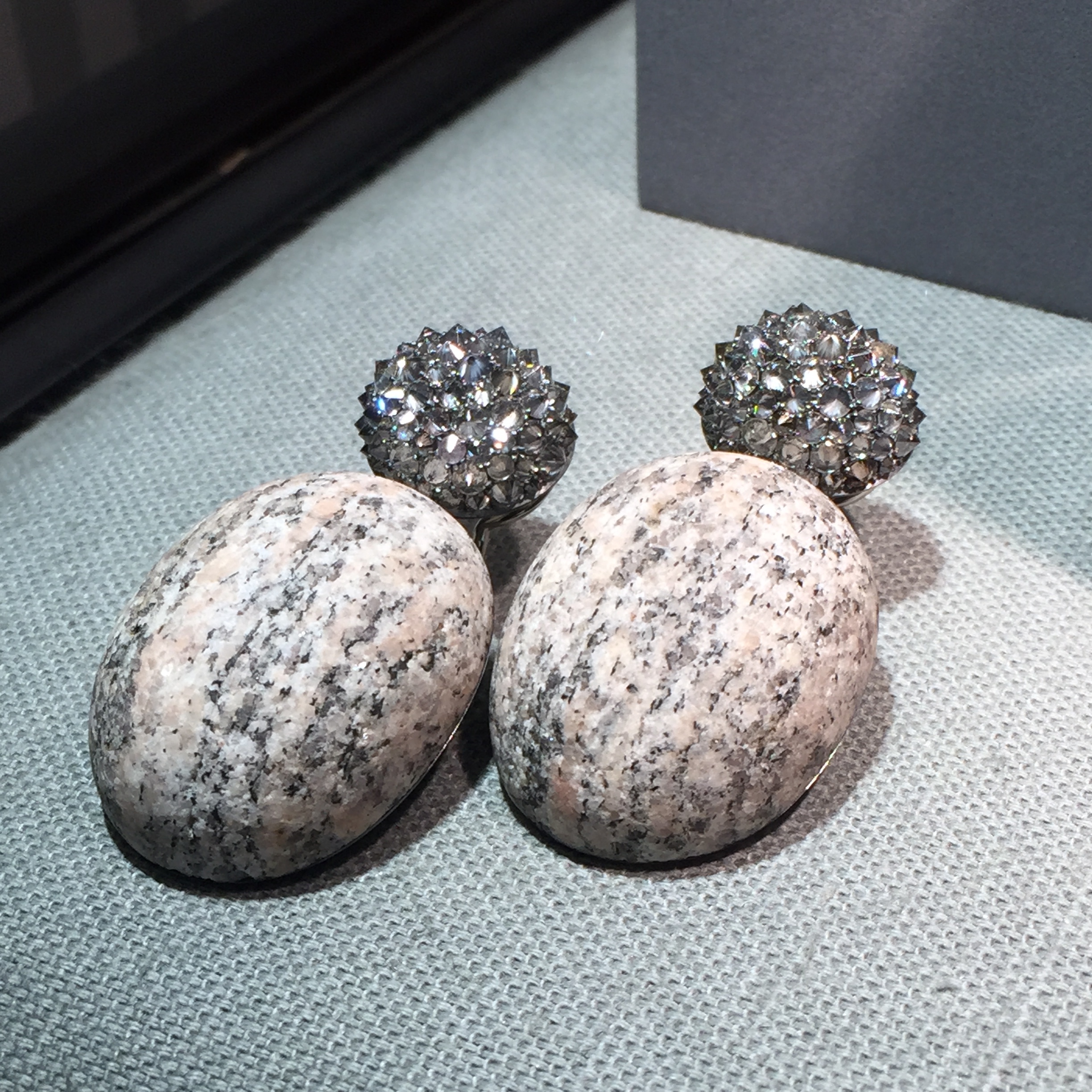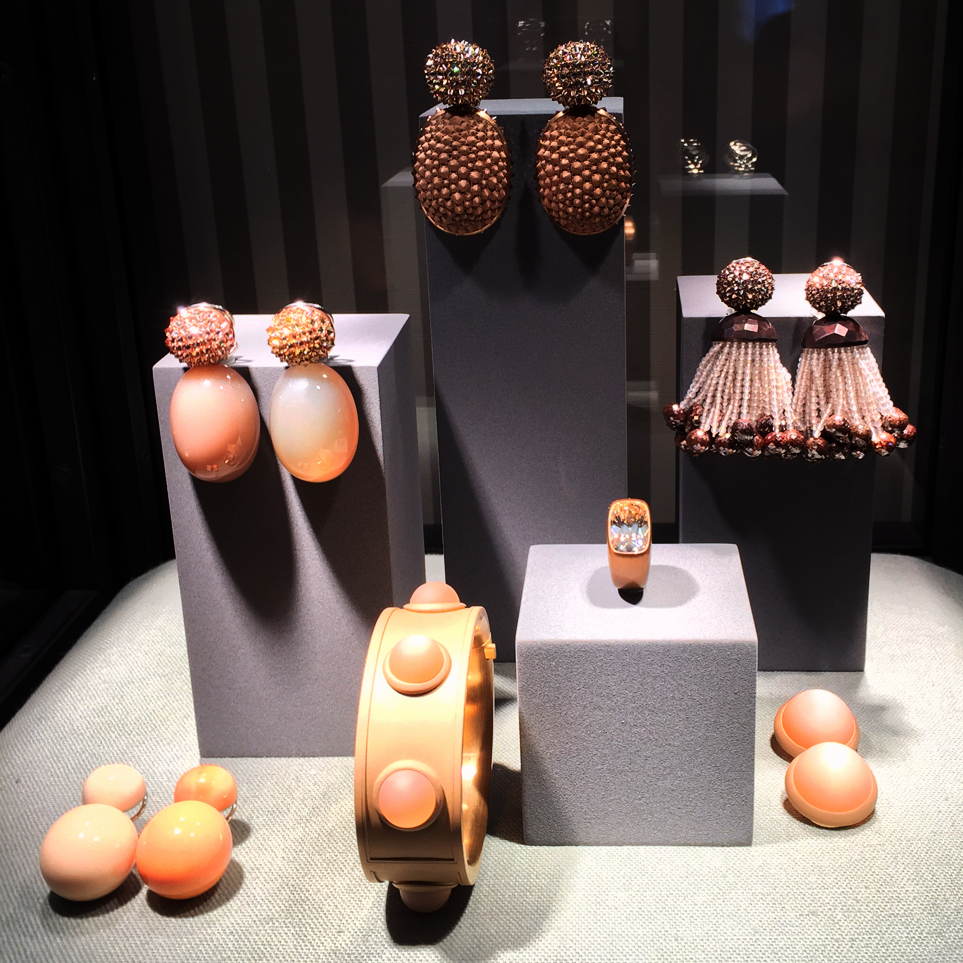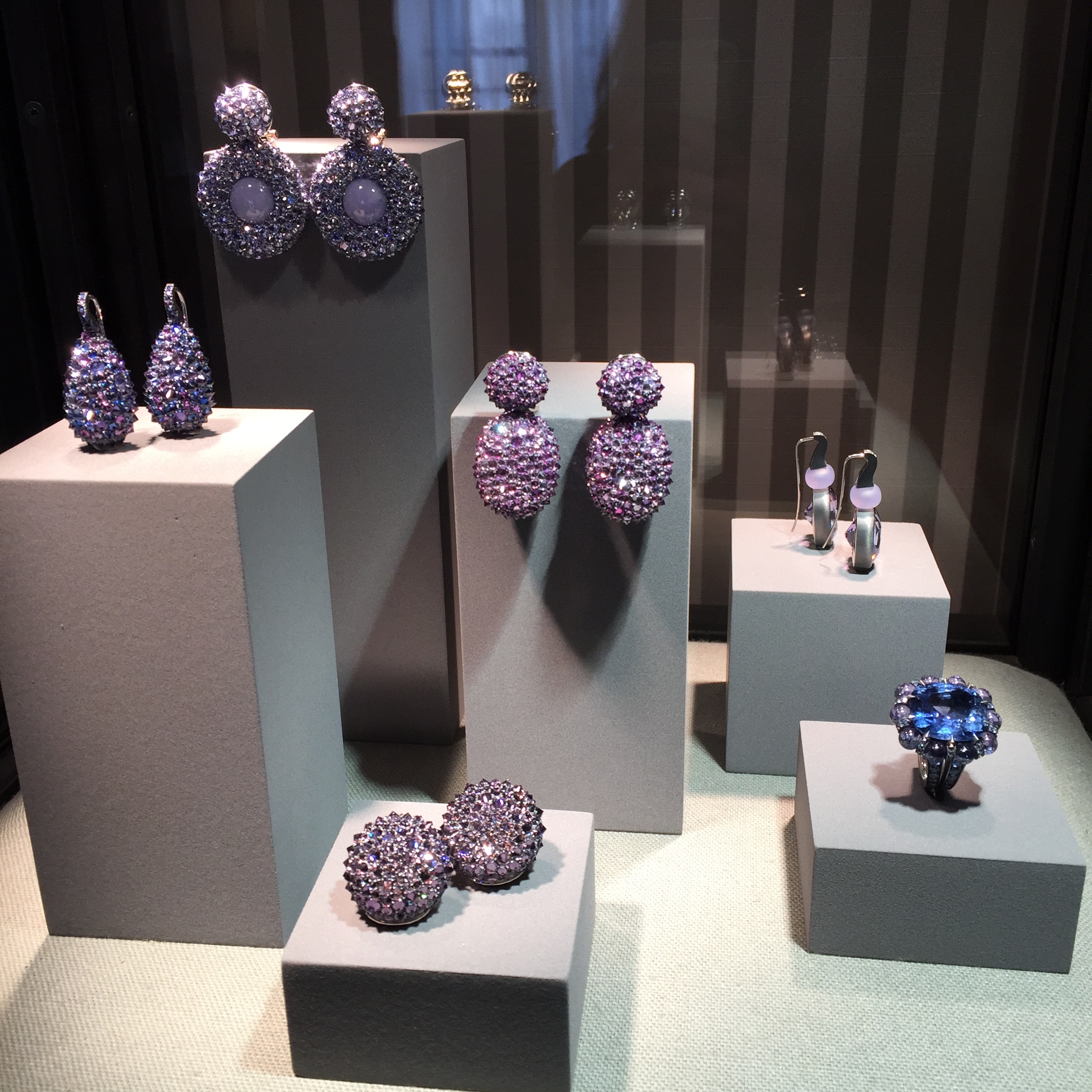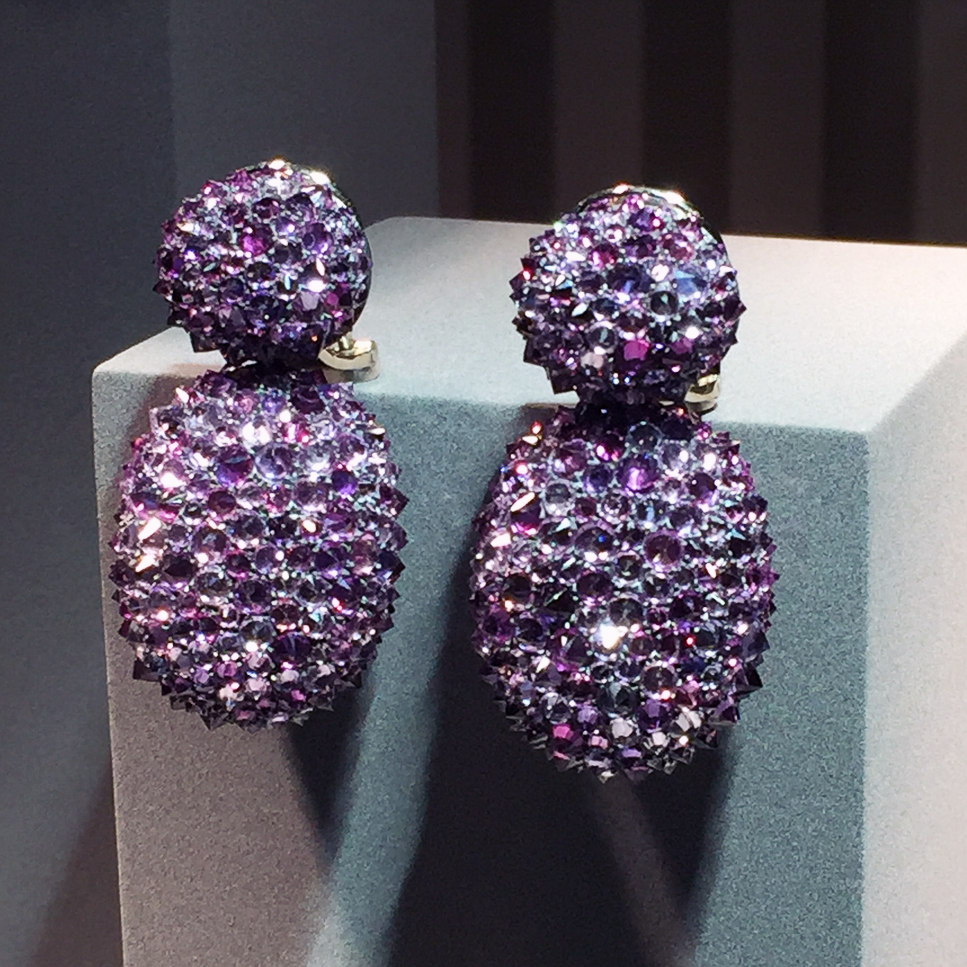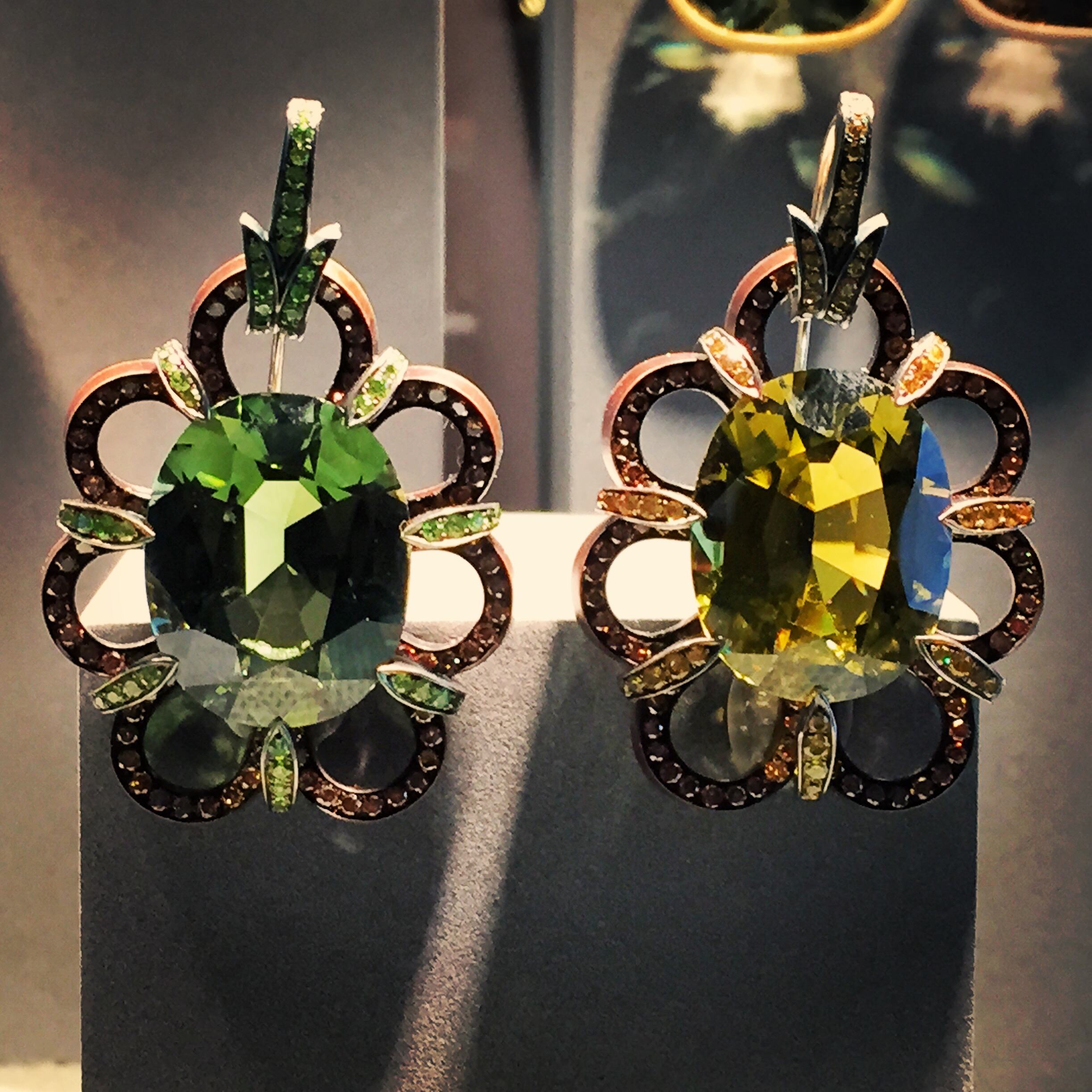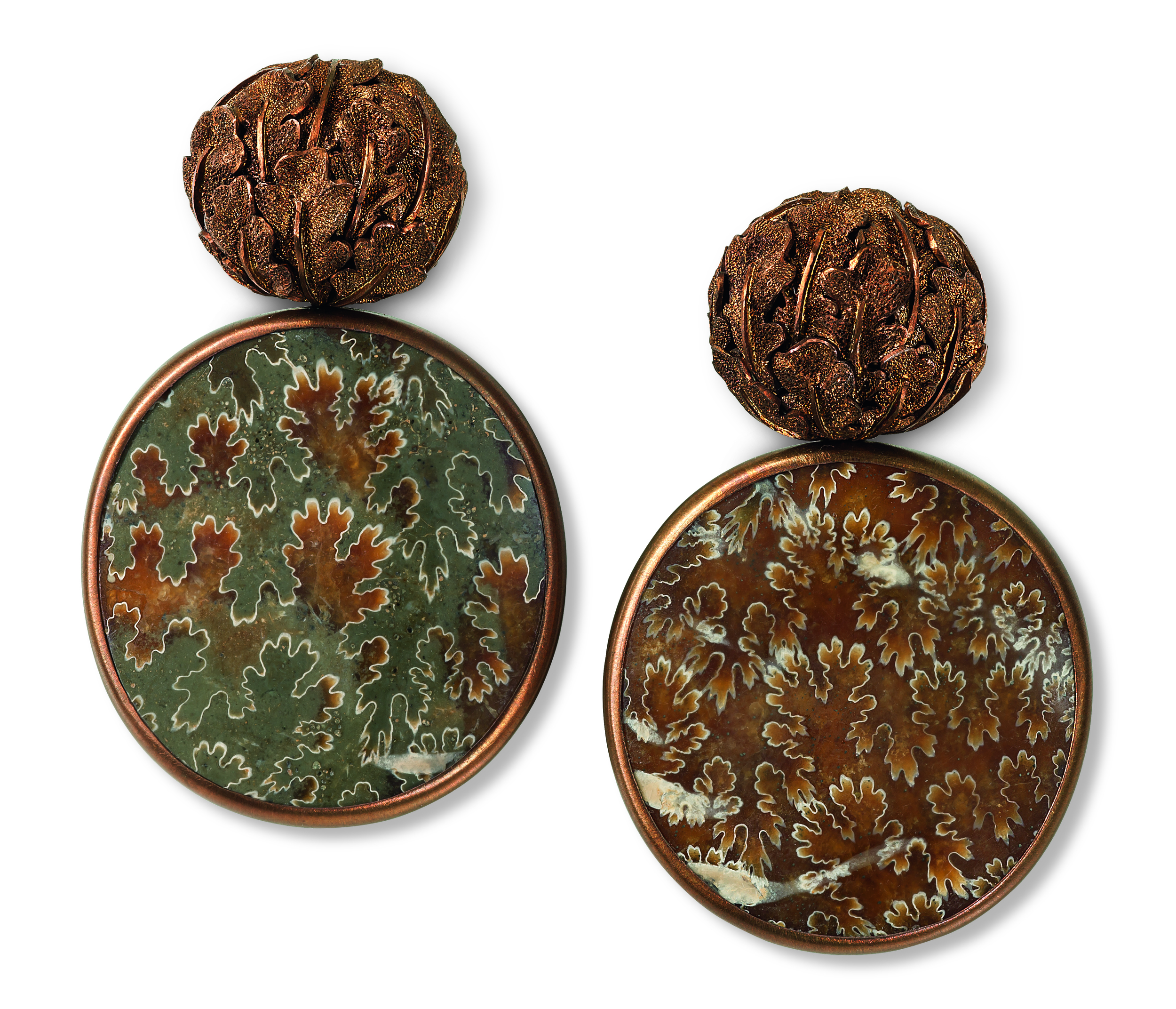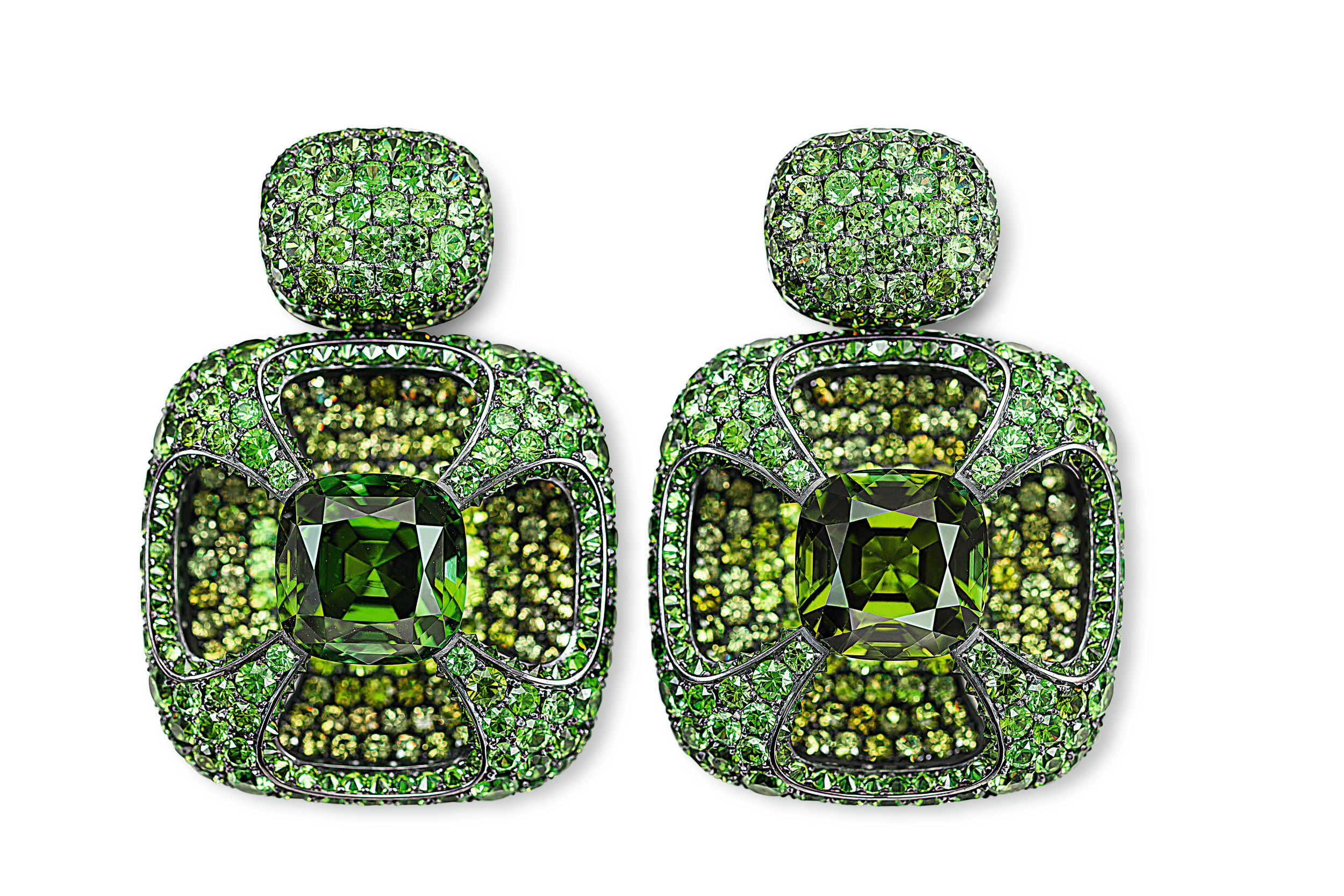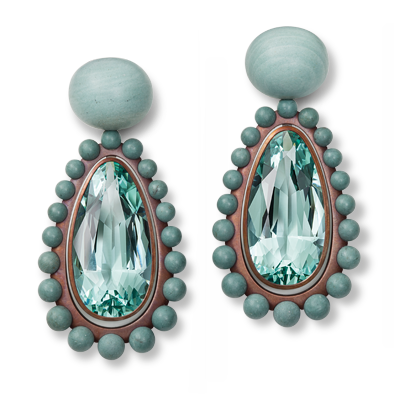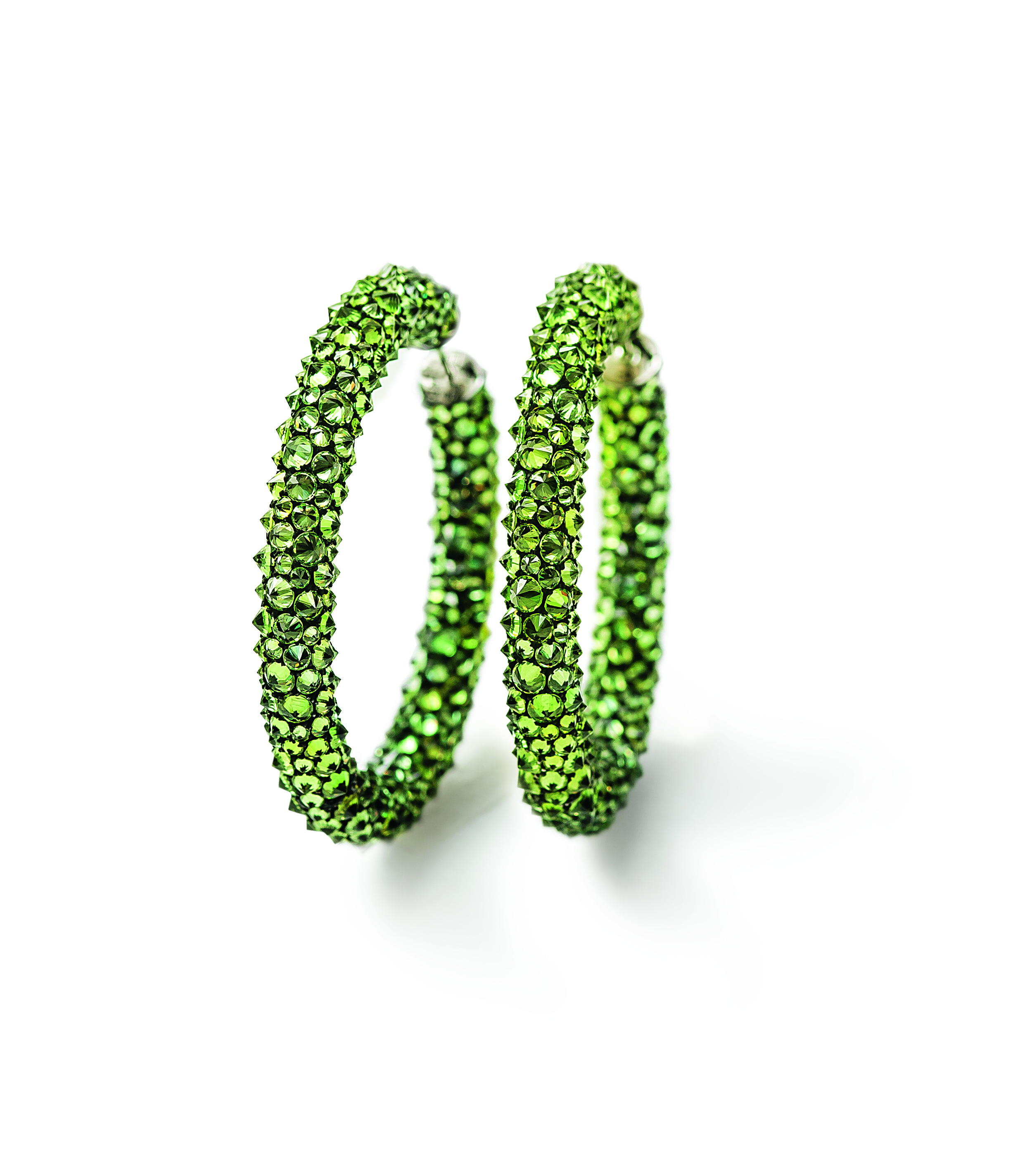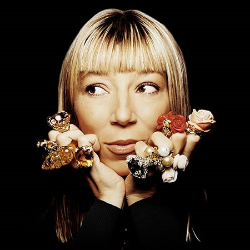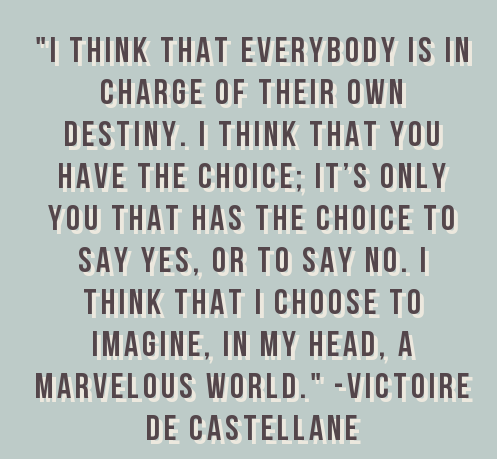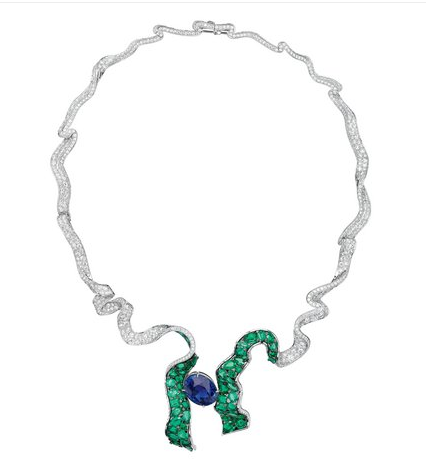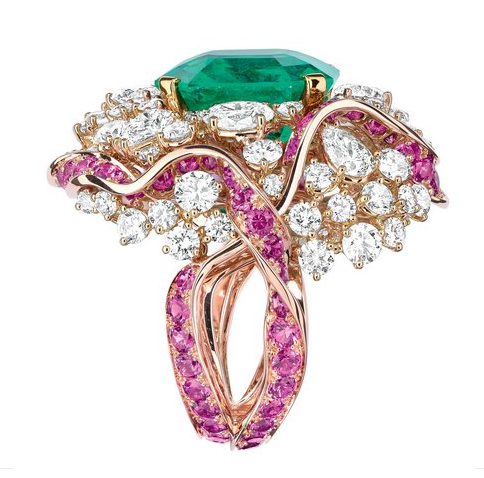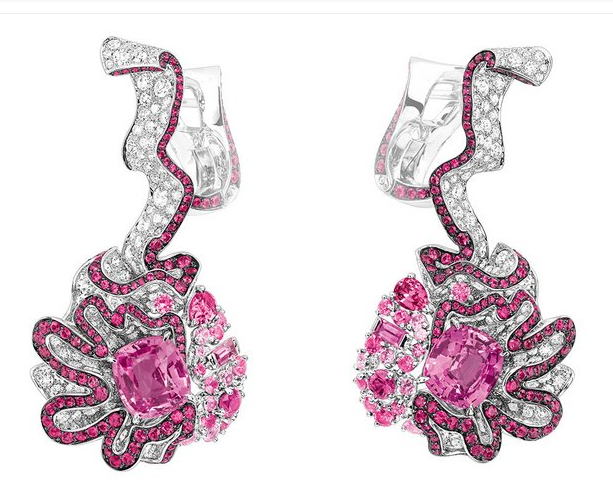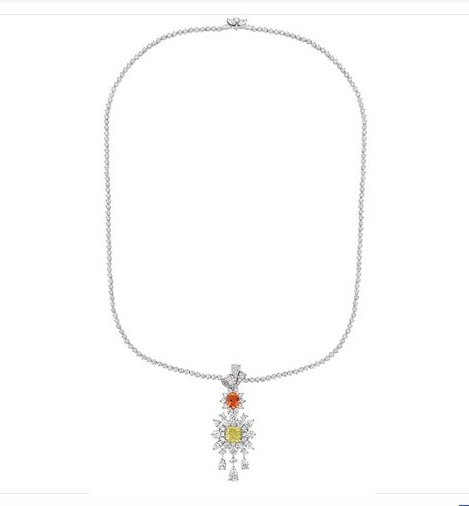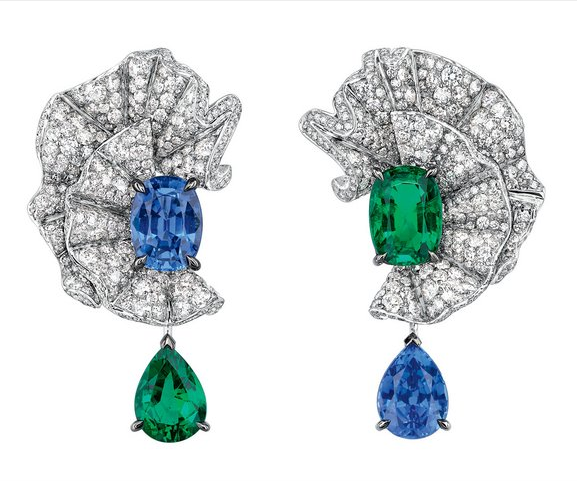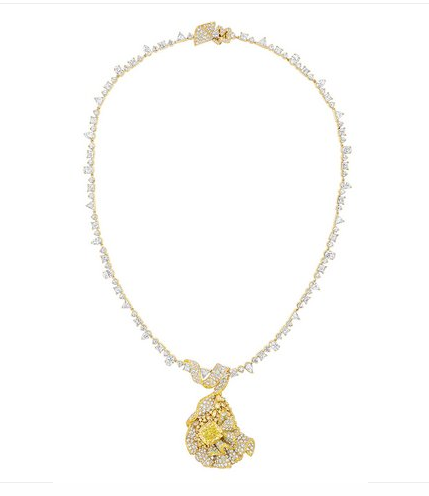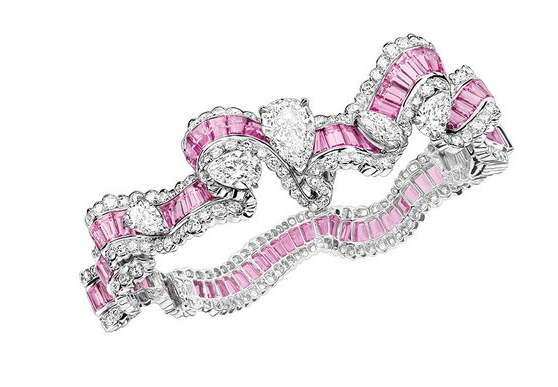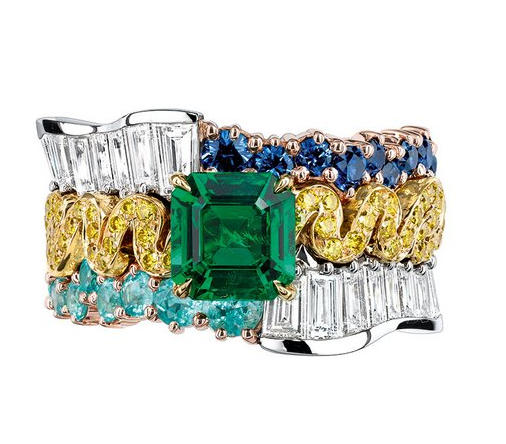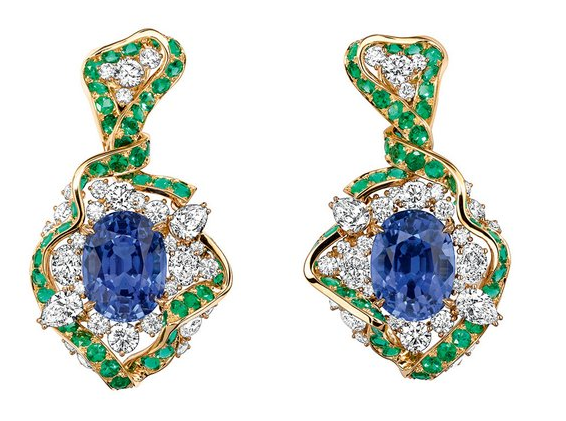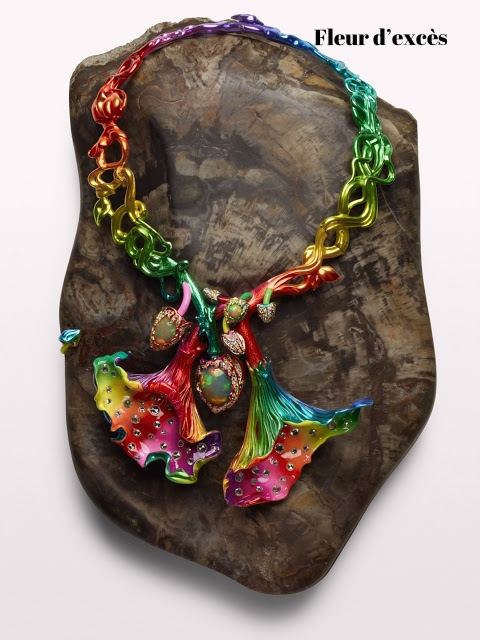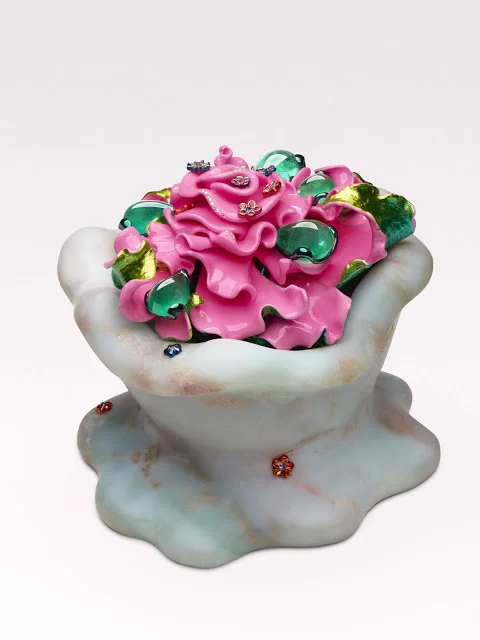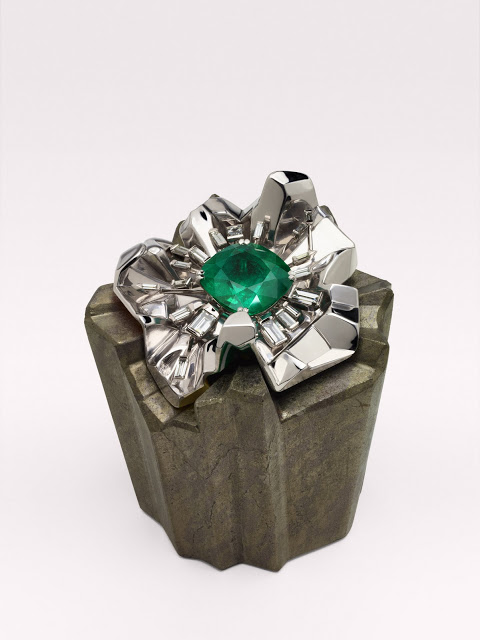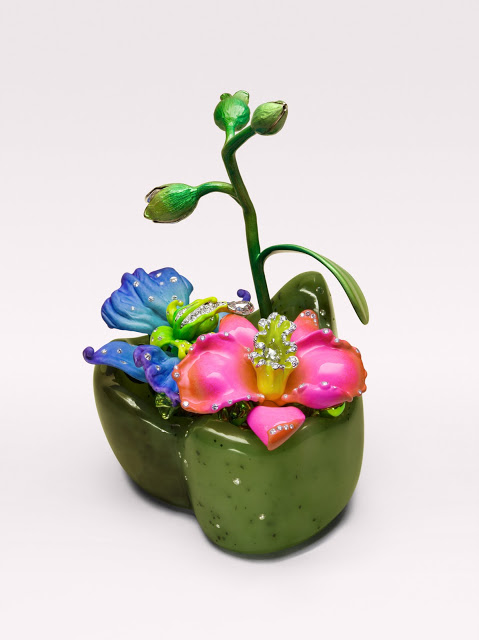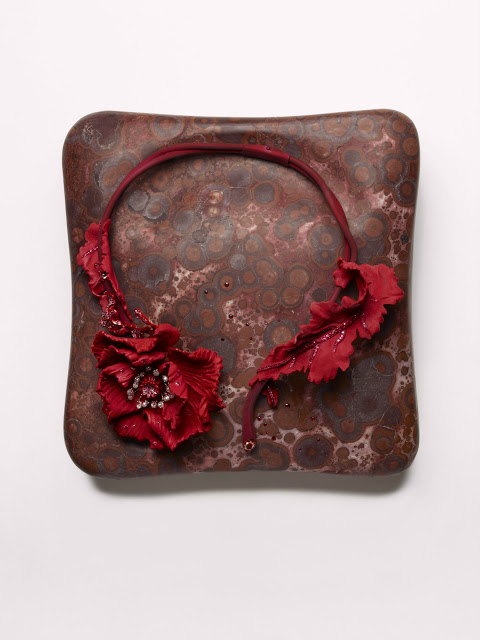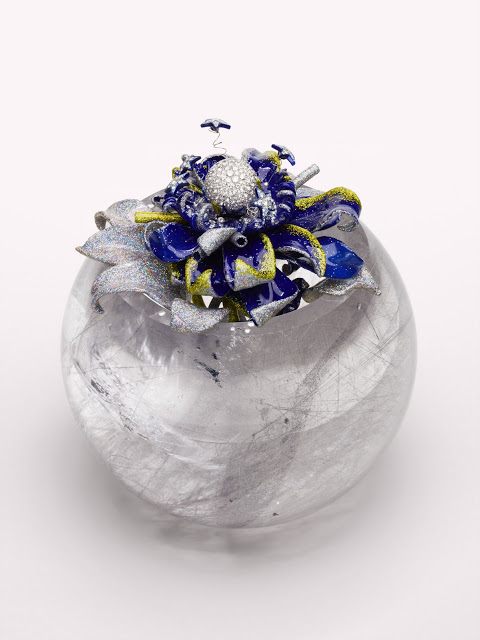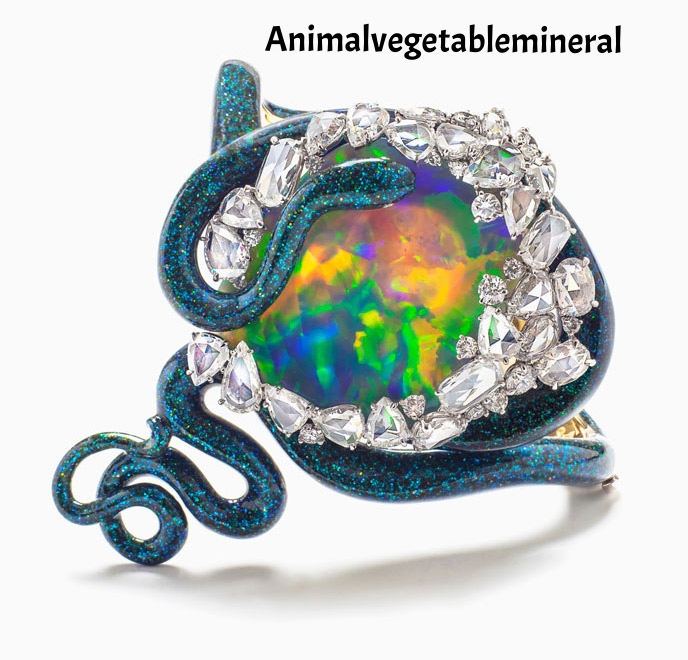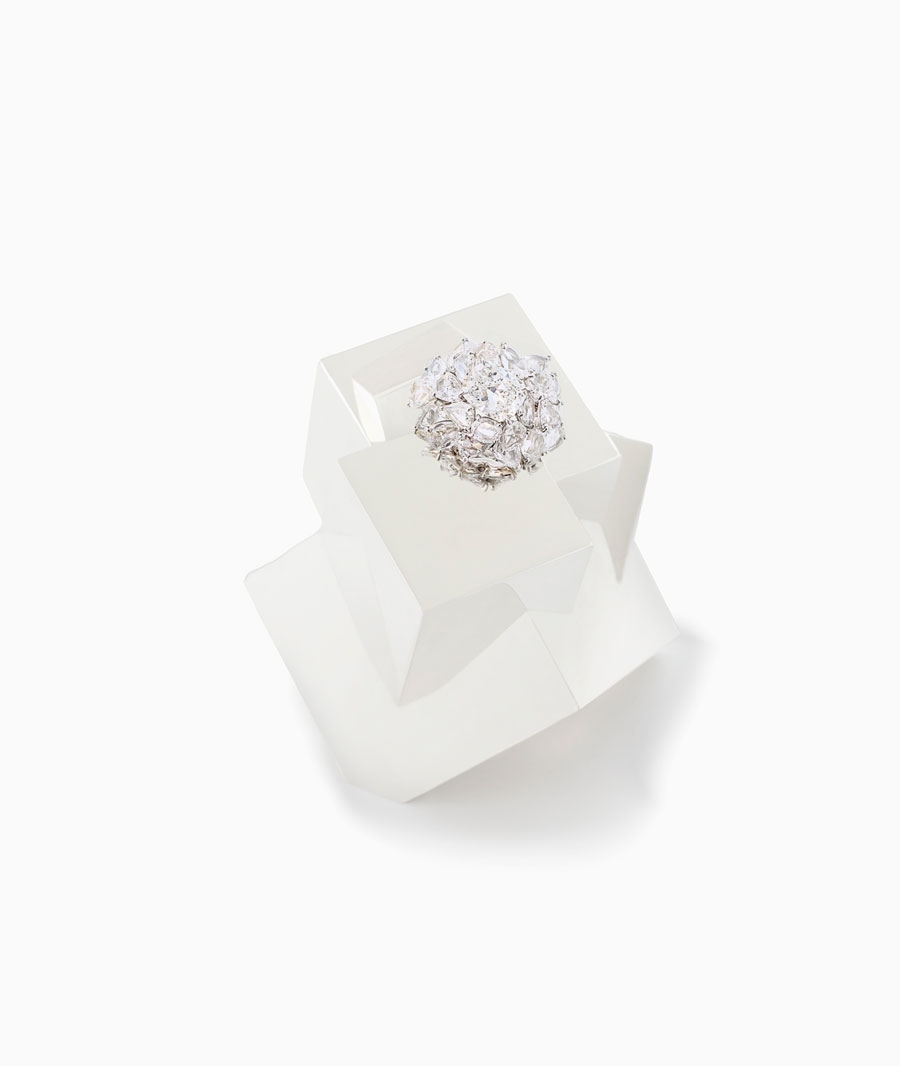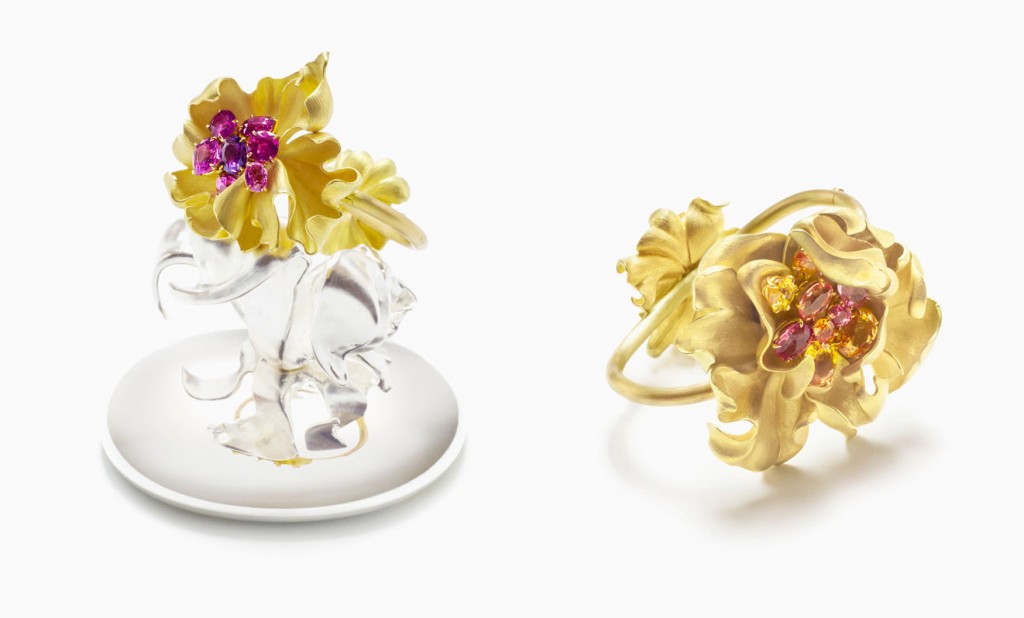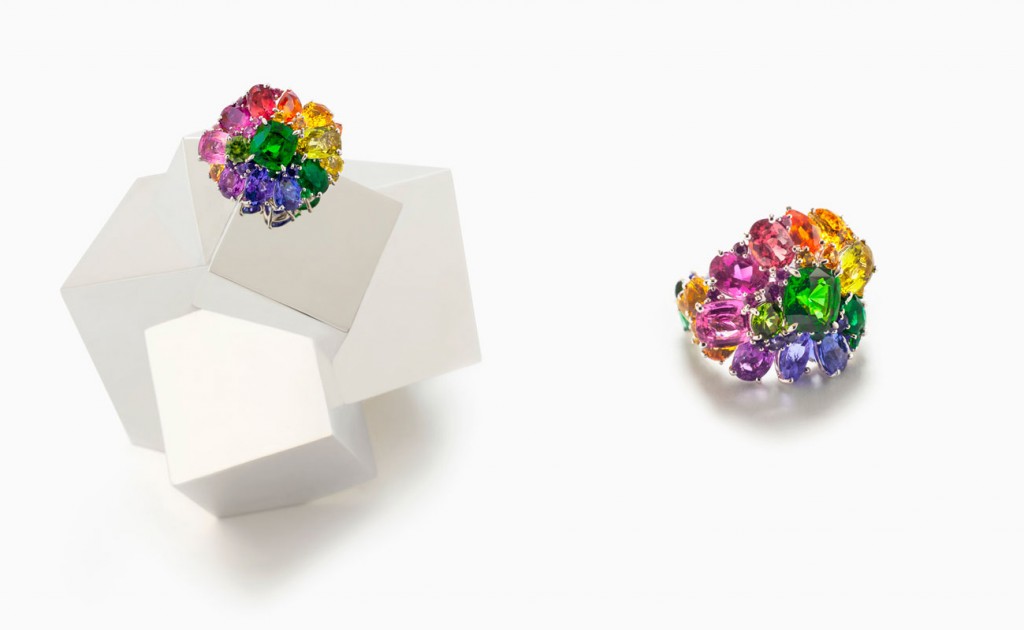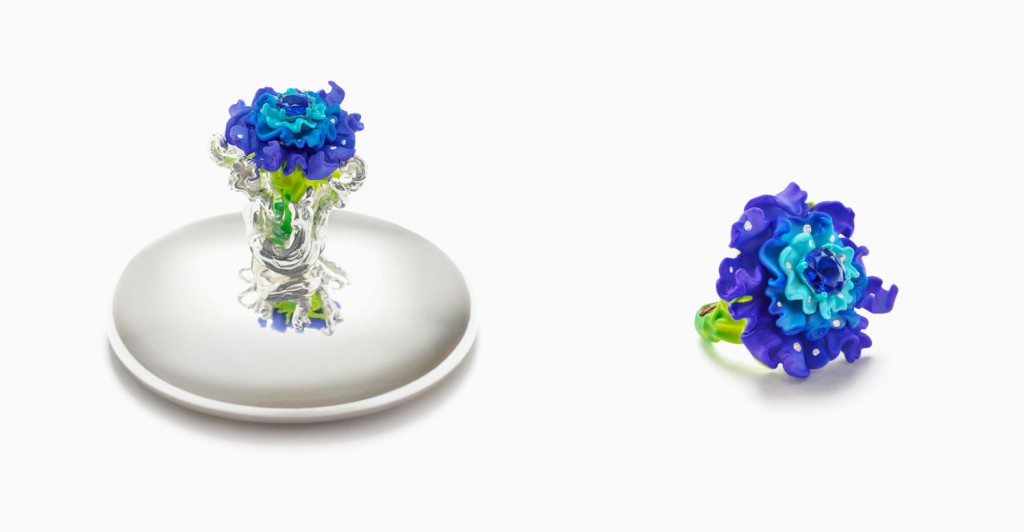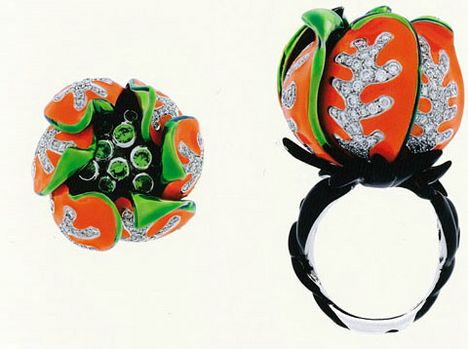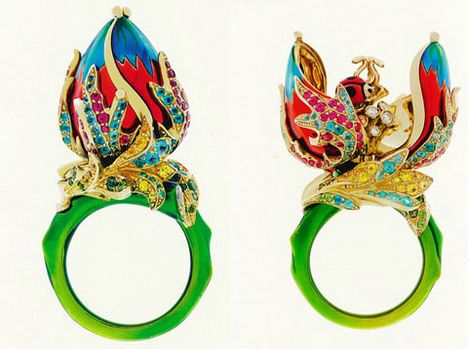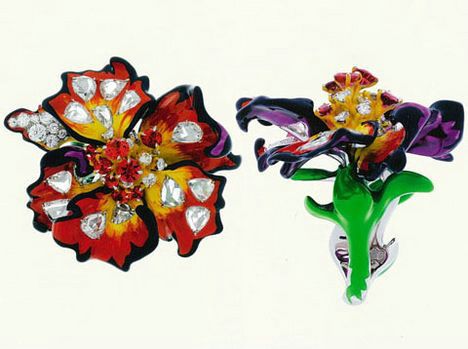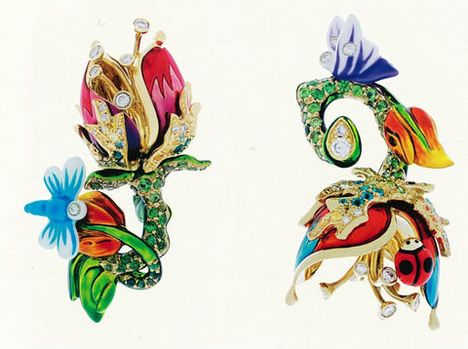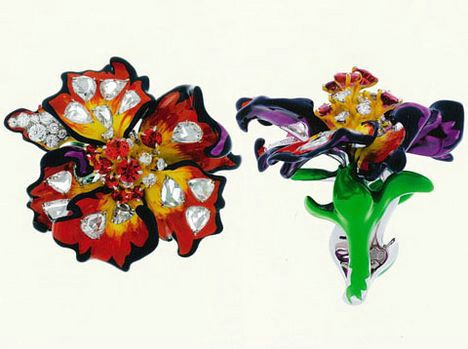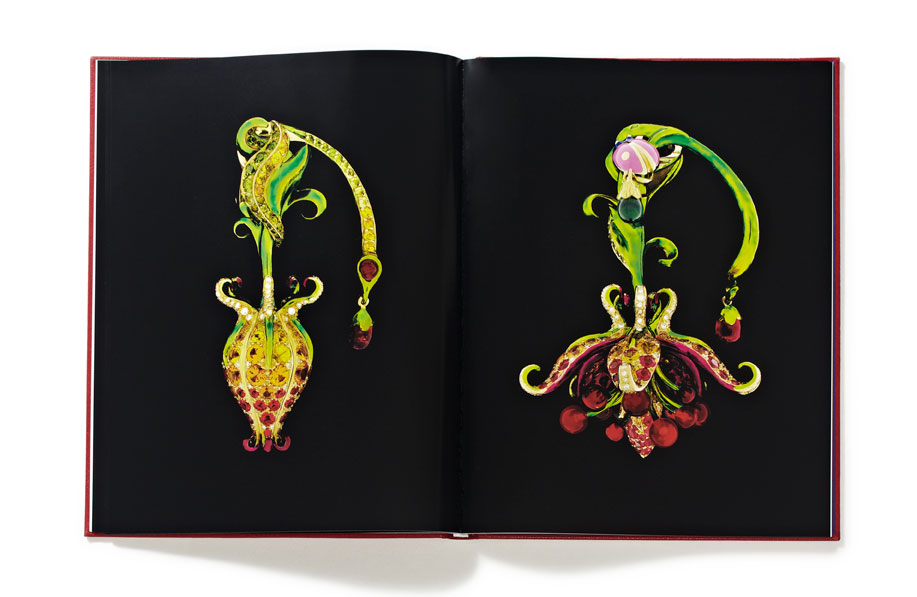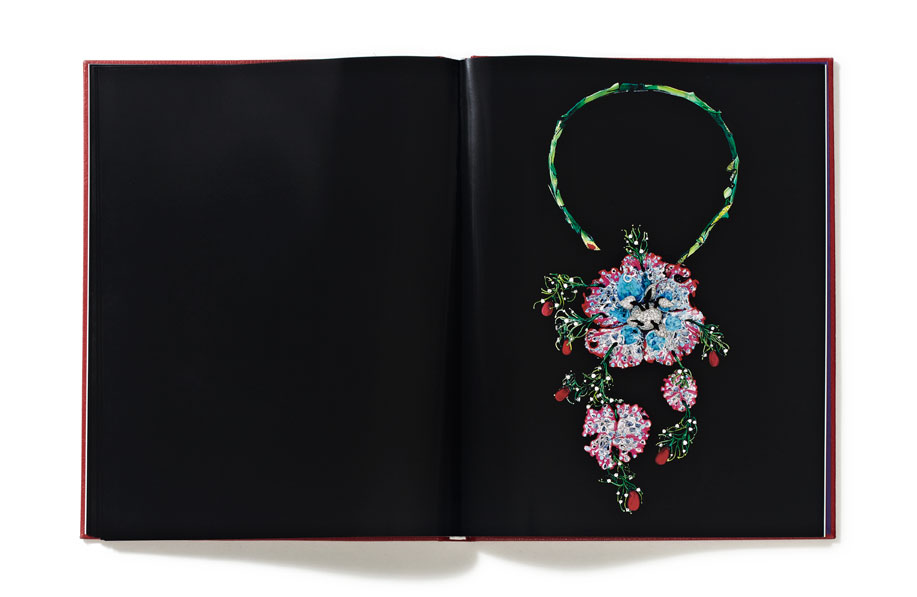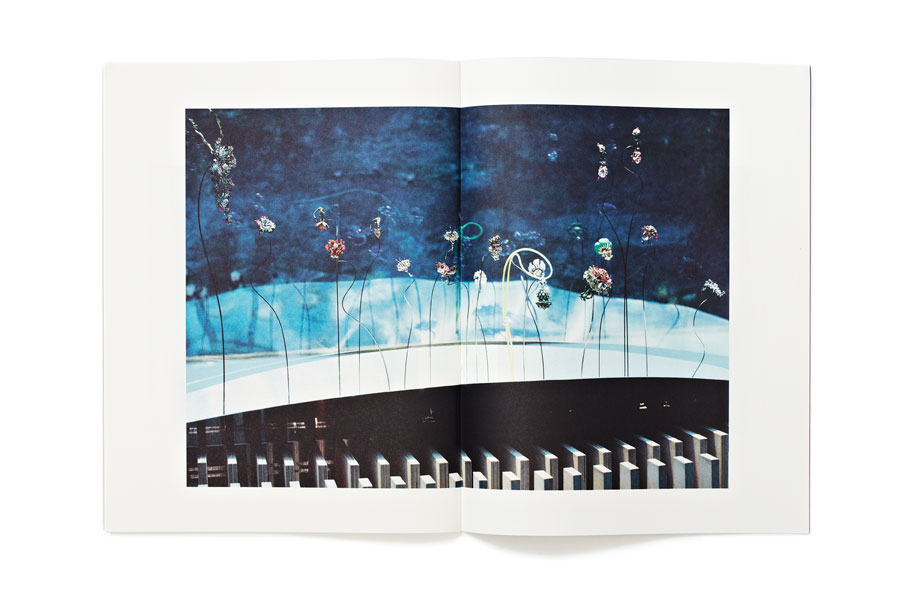Falling for Hemmerle
/Hemmerle ring, diamond, copper, white gold, Courtesy of Hemmerle
Hemmerle never fails to impress and delight. The New York fall preview that took place last week was no exception. Hemmerle jewelry can be somewhat of an enigma when first encountered. Precious stones mingle with seemingly common materials such as wood, copper, or aluminium. Clean architectual lines mingle with flouncing tassles and playful shapes. Often it feels as though as though Hemmerle is daring you to rethink your ideas about high end jewelry. Good art makes you think, and that's what Hemmerle's pieces do.
Hemmerle is a fourth generation family run jeweler that was established in 1893. Today Stefan and Sylveli Hemmerle run the business alongside their son, Christian, and his wife, Yasmin. With a long and illustrious history including an appointment as 'Purveyor to the Court' by Luitpold, Prince Regent of Bavaria in 1895, you would expect the atmosphere to be stiff; however, stepping into the small suite at the Hotel Plaza Athénée there was immediately a sense of intimacy and familiarity. Part of what makes Hemmerle special is the familial nature of the business.
The jewelry that Hemmerle creates is strikingly original. The roots are that of modern minimalism but there is a juxtaposition that occurs because Hemmerle has never strayed from the humanness of jewelry creation. Just as every human is unique, so is every Hemmerle creation. Each piece of jewelry is a singular creation never to be repeated. A single piece can take over 500 hours of work to create, and this is only after the perfect stones and materials have been chosen.
This can mean that a piece has actually taken years to complete. Christian Hemmerle explains, “We find the perfect stone and then create a distinctive design especially for it. The design then becomes a reality in our Munich atelier. We are always experimenting with new materials to find the perfect combinations for a stone; in a recent pairs of earrings we used concrete and aluminium.” The result of Hemmerle's continued evolution was a lovely sight to behold.
The cases were filled with Hemmerle's signature styles including structural pieces with geometric lines. The open-ended harmony bangle with its
seamless closure, tassel and gemstones set upside down to give a 'spiky' almost organic look while maintaining a modern edge. Copper, stainless steel and unusual varieties of wood seamlessly mingled with rare stones like striking tourmaline, beryl, and sphene as well as other materials including Egyptian faience figures, pebbles, and even a smoothed stone that was picked up on a beach. Stunning sun-orange melo pearls from the South China Sea mingled in a case with soft sandblasted moonstones set in sandblasted gold, creating a warm touchable look. Hemmerle is also one of the few jewelers to use an old Austrian technique of knitting cut stones in the round over silk. Each bead is hand hewn and drilled then matched for color.
Hemmerle atelier. Courtesy Hemmerle
A question that is often asked about Hemmerle pieces is how wearable are they? The answer is: very. This was demonstrated to me by Yasmin, when she removed her earring exclaiming "You have to feel this!" The large two inch long or so "pine cone" was incredibly light. Hemmerle’s use of clever engineering means pieces are carefully weighted to be surprisingly light and have the perfect balance of movement.
The stars of the show, so to speak, were pieces that featured tiny, individually made, copper leaves. They cradled a beautiful, warm brown-diamond in a ring, formed earrings accented by tiny brown diamonds, and formed the anchor point from which two rare and beautiful cut ammonite cabochons were suspended. Fall was definitely in the air.
Hemmerle jewelry reflects those who create it. It is a long process and there is an unmistakable human touch in every part of the process. Yasmin spoke highly of how Hemmerle's pieces are created from Stefan's first sketch through to the finishing touches. A few moments after she said this, I was able to witness the beginning of this process as Stefan placed himself in a sunlit corner of the suite and sat calmly, engrossed in sketching a design for a client. She continued that they are always looking, and ideas and innovation can grow out of out anything, even out of what at first may appear to be an error. She said, "Sometimes there is beauty in human error. We are all human after all." She explained that the processes that allow them to maintain high standards of quality also keep them from growing distant from their work. The human connection is what makes Hemmerle stand apart. Hemmerle is not just a brand; it is a relationship. Each piece of jewelry has a story, and creates its own stories. Hemmerle invites you not just to buy jewelry, but to have a relationship with it.
Hemmerle’s work can be bought at its Maximilianstrasse boutique in Munich, online and by appointment at private sales around the world. For further information please visit www.hemmerle.com.
“The creative philosophy behind Hemmerle’s designs was sparked by a commission from a client, an art collector who ‘detested flashy gems.’ She wore examples of early 19th century Berlin iron jewellery: neo-classical, architectural cast iron ornaments worn by patriotic Germans in place of gold, which they donated to the War effort during the War of Liberation, 1813-15. With this in mind, Stefan Hemmerle decides to set an important diamond in a ring of textured iron.”
Photos: First photo set taken by author. Second photo set provided by Hemmerle, please rollover images with your mouse to see descriptions
Kathleen Marino MA, GG, AJP, NAJA
